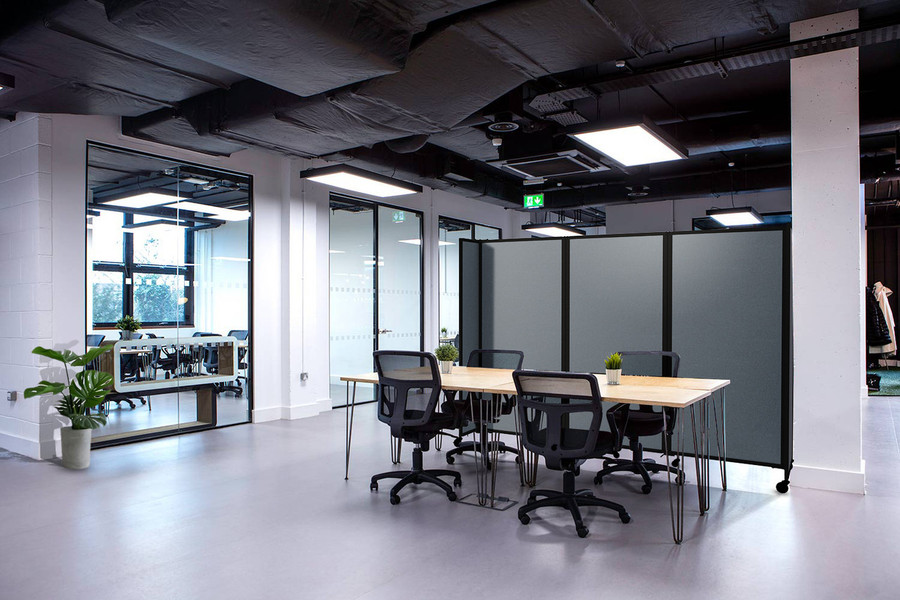For much of the 20th century, New Zealand offices were a sea of partitions, filing cabinets, and private rooms. But over the decades, walls have steadily disappeared, giving way to the modern open-plan workspace—a design trend that’s been both celebrated for its collaboration potential and criticised for its noise and distraction.
A Brief Timeline
1950s – Roots Overseas
The concept of the open-plan office traces back to post-war Germany, where the Bürolandschaft (“office landscape”) movement reimagined office layouts to improve communication and efficiency.
1960s – Corporate Experiments
American design firm Herman Miller introduced the Action Office, an early open workspace system. While cubicles soon followed, the seed for more open layouts had been planted.
1970 – Early NZ Adoption in Education
Hamilton’s Deanwell School became New Zealand’s first open-plan school building, reflecting a broader architectural move toward openness and flexibility in public spaces.
1980s–1990s – Gradual Shift in Workplaces
Private offices began giving way to more open layouts in NZ corporates, driven by cost efficiency and changing management styles.
2000s – The Open-Plan Boom
The tech sector’s rise, with its casual and collaborative culture, influenced New Zealand office design. Large organisations began removing walls en masse.
2010s – Hot-Desking and Activity-Based Working
Major firms like Fonterra and Vodafone embraced activity-based working (ABW), offering staff a mix of zones—quiet rooms, collaborative spaces, and no fixed desks.
2020s – Re-evaluation
The pandemic forced remote work, sparking debate about noise, privacy, and health in open spaces. Many NZ companies are now blending open layouts with more enclosed “focus zones.”
The Pros
-
Collaboration on Tap – Teams can share ideas quickly without formal meetings.
-
Flexible and Adaptable – Spaces can be reconfigured as teams grow or change.
-
Cost-Effective – Fewer walls mean cheaper builds and the ability to fit more staff in the same space.
-
Modern Culture – Feels less hierarchical; managers often work alongside staff.
-
Light and Air – Better access to natural light and ventilation.
The Cons
-
Noise and Distraction – Conversations, phone calls, and movement can harm focus.
-
Loss of Privacy – Harder to keep conversations and screens confidential.
-
Productivity Hits – Some research shows open offices can reduce meaningful in-person interaction.
-
Stress Levels – Constant interruptions can drain energy and morale.
-
Health Concerns – Shared air and surfaces increase the risk of illness.
-
Not for Everyone – Confidential or highly focused work suffers without enclosed areas.
How Portable Partitions Change the Equation
This is where Versare NZ’s portable partitions make a measurable difference. In open-plan environments, they can:
-
Reduce Noise – Acoustic-damping panels help absorb sound, lowering distractions.
-
Create Privacy on Demand – Staff can quickly set up confidential meeting areas or individual focus zones without permanent walls.
-
Preserve Flexibility – Partitions can be moved, folded, or re-configured in minutes to suit changing needs.
-
Support Health & Safety – Physical barriers can reduce the spread of airborne germs in high-traffic areas.
-
Enhance Aesthetics – Available in fabrics, polycarbonate, or custom finishes to complement interior design.
By integrating portable partitions, businesses can keep the open-plan benefits—collaboration, flexibility, and modern feel—while mitigating its biggest drawbacks.
Where We Are Now
In New Zealand, the open-plan office isn’t disappearing—but it’s evolving. The future lies in hybrid layouts where open areas, private rooms, and movable partitions work together. It’s not a question of open or closed, but how intelligently you can mix the two.
 New Zealand Dollar
New Zealand Dollar

